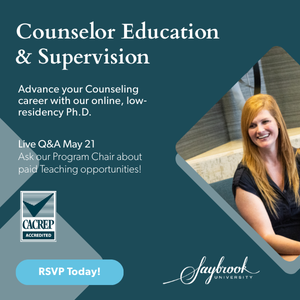Explore Counseling Today Articles
Making schools more inclusive for LGBTQ+ students
In working with children and families who have experienced trauma, I have accompanied a diverse range of LGBTQ+ clients on their healing journeys. Sometimes their challenges arise from a single significant event, and other times, a collection of circumstances and support system failures contribute to their struggle.
When a person mentions a “support system,” the first thing that often comes to mind is one’s family or peer network. However, support systems can also include organizations, and when it comes to children, especially those in the LGBTQ+ community, schools can serve as additional and vital systems of support.
It is a well-supported fact in mental health research that LGBTQ+ individuals are at greater risk for mental health challenges than those from other groups. According to the National Alliance on Mental Illness, those who identify as LGBTQ+ are nearly three times more likely to develop a mental health disorder such as depression or anxiety and are significantly more likely to attempt suicide and abuse substances. The risks are especially high for adolescents and young adults, with LGBTQ+ youth ages 10–24 being four times more likely than their peers to attempt suicide.
Because many students in districts across the nation are part of the LGBTQ+ community and use mental health services, schools can play an important role in creating an inclusive and trauma-informed environment to prioritize mental health prevention and intervention. In this article, I share one student’s story and offer advice on how counselors and schools can create a supportive environment for all students.
One student’s experience as an LGBTQ+ individual
CJ (a pseudonym) is a high school senior who began receiving mental health services primarily to address ongoing challenges with anxiety and depression. CJ acknowledged that while a lot of progress has been made when it comes to creating a sense of inclusivity for LGBTQ+ people in their current community, they “have never truly felt included.”
Although CJ is comfortable and confident in their gender and sexual identity, they expressed that their emotional safety is challenged on a daily basis living as an LGBTQ+ individual. CJ described the deep hurt that accompanies the perpetuation of stereotypes, saying, “There is this constant stream of negative feedback on who I am as a person.”
CJ found it particularly hard to trust anyone. CJ believed that some teachers and students will “treat them as a completely different person” after learning CJ is an LGBTQ+ individual, despite having previously welcomed them into their social and physical spaces.
CJ further described the unmistakable discomfort that others display when they are outed in conversations: “There is always that pause — that deafening pause. Conversations shut down when they learn that about me. They try to escape it as quickly as possible.”
Inevitably, anger, confusion, a sense of shame and feelings of rejection accompany these all-too-frequent interactions with peers and adults. CJ explained that other LGBTQ+ students on campus tend to “stick together” for social and emotional support, but this does not diminish the challenges that accompany identifying as an LGBTQ+ person. CJ described the mental energy they must spend distinguishing safe people and spaces at school, and the crushing disappointment and loss that come with learning that someone is nonaffirming. “I wish everyone here was super welcoming, but that is too much to expect. There are people here that want nothing to do with someone like me, and it hurts,” CJ said.
CJ shared that when they came out to their family, they felt a renewed sense of freedom and happiness, but they quickly realized that sense of freedom did not translate to their school and community environments. CJ’s confidence and comfort began to crumble as they consistently found that they could not out themself unless they had determined a person or group was safe, which proved difficult to do.
Constant disappointment can take a toll on even the most resilient of individuals. “I’ve told many people in your line of work [mental health] that I’ve become less and less comfortable telling people that I am gay,” said CJ. “I’ve even gone out of my way to try and make people more comfortable by avoiding that topic.”
This transition — from being open and free to being guarded and cautious — was a significant loss that CJ continues to grieve, all while carrying the burden of other people’s discomfort with who they are. Like many others who belong to the LGBTQ+ community, CJ knew from early on that they were “different” from many of their peers. Their identity was not something that they “chose or created” but just who they were.
CJ shared one instance when their class engaged in a discussion about whether people were “born gay.” The consensus among the teacher and most students was that this was not possible but rather that homosexuality was something people chose. CJ described feeling outnumbered, unsafe and angry that a group with an entirely different set of beliefs and experiences was explaining CJ’s identity as a choice, without having any degree of understanding of who CJ was, what their life experience had been or the hurt that the conversation was causing them in that moment.
Just as many individuals who struggle with anxiety are constantly operating on high alert, many who identify as LGBTQ+ must scan for indicators of safety and inclusion, and negative experiences further reinforce a lack of trust in others and a decreased sense of safety. For this to be happening at school — where students spend most of their daily lives with the expectations of safety and support — has concerning implications. This becomes even more serious when one considers students who already struggle with anxiety and depression because of other factors.
Despite continuing support from mental health and medical professionals, CJ struggled with ongoing invalidation and oppression, and at more than one point, this bright, funny and engaging student was hospitalized because they had become suicidal. While psychiatric hospitals are a crucial part of mental health care system, they are not usually the warm, supportive and healing environments that we would like to believe they are. On multiple occasions, CJ spent days away from loved ones, with no contact with the outside world and surrounded by other patients who carried their own horrific traumatic experiences.
This is the cycle that many of our most vulnerable students endure when they do not have safe, supportive and affirming environments to be who they are while they spend their mental and emotional energy connecting with others, tackling academic demands and navigating the stress of adolescence. They survive until the weight of all their turmoil becomes too much and they fall apart. Most of the time, counselors are fortunate enough to pull them back to safety, but sometimes, these students slip away.
Steps to creating an inclusive environment
Providing and promoting an inclusive, welcoming and trauma-informed school environment is more critical than ever for ensuring that all students, including LGBTQ+ students, can experience the sense of safety and belonging that they deserve. How can this be accomplished?
- Create a culture shift. School staff must first be willing to take responsibility for all students in the school. This necessitates learning from one another through communication, collaboration and professional development opportunities. Great strides have been made through the use of multitiered systems of support teams, in which staff from various departments and specialties come together to develop appropriate interventions for students who exhibit academic, behavioral or mental health needs.
- Become trauma informed. Establishing a safe and inclusive school setting requires that staff be trauma informed. Staff must be willing to recognize their own implicit biases and understand that everyone has their own story. All staff — not just teachers and administrators — need to be educated and equipped to recognize basic signs and symptoms of mental health challenges and know who to contact if they have concerns about a student’s well-being.
- Provide resources. Students and families need to be aware of the resources available to them on and off campus. All staff should be familiar with key resources, including local mental health authorities, LGBTQ+ organizations, crisis hotlines and bilingual providers. In addition, posters with inclusive language celebrating diversity and addressing the stigmas surrounding mental health challenges need to be visible throughout campuses.
- Make time for connection. Staff should make an effort to learn the names of all their students and use their correct names and pronouns. This will allow each student to feel valued. It also models respect and acceptance for all students. To create or strengthen students’ support systems, staff should also establish regular contact with families to develop trust and build a successful partnership.
Inclusivity and equality are not new concepts, but there is still much work to be done. Our work as counselors matters because our students matter. My hope in sharing CJ’s story is for school counselors, administrators and staff to recognize the potential impact they can have in the lives of all students by being an advocate and resource on campuses and in their communities.
 Stephanie
Opiela is a licensed professional counselor-supervisor with over 14
years of experience serving clients with histories of adversity. Most of
her career has been dedicated to serving children and families affected
by abuse, first in a therapist role and then as a program director and
clinical director for local children’s advocacy centers. Her work with
medical professionals, law enforcement, child and family protective
services, and district attorney’s offices continues to fuel her passion
for promoting trauma-informed care in systems that are designed to
protect children. She currently serves as a school-based therapist for a
campus of 2,500 students. Contact her at stephanie.opiela@dsisdtx.us.
Stephanie
Opiela is a licensed professional counselor-supervisor with over 14
years of experience serving clients with histories of adversity. Most of
her career has been dedicated to serving children and families affected
by abuse, first in a therapist role and then as a program director and
clinical director for local children’s advocacy centers. Her work with
medical professionals, law enforcement, child and family protective
services, and district attorney’s offices continues to fuel her passion
for promoting trauma-informed care in systems that are designed to
protect children. She currently serves as a school-based therapist for a
campus of 2,500 students. Contact her at stephanie.opiela@dsisdtx.us.
The views expressed in Counseling Today are those of the authors and contributors and may not reflect the official policies or positions of the editors or the American Counseling Association.
- Cultural Identities, Multiculturalism & Diversity
- LGBTQ+
Search CT Articles
Filter CT Articles
Current Issue
Sign Up for Updates
Keep up to date on the latest in counseling practice. Sign up to receive email updates from Counseling Today.



